There might be affiliate links on this page, which means we get a small commission of anything you buy. As an Amazon Associate we earn from qualifying purchases. Please do your own research before making any online purchase.
There are two types of people in this world… those who write well and those who don’t.
Those who write well typically tend to enjoy it… or at least not mind it. They may not be authors or write for a living, but they know about proper tense and the difference between an adjective and an adverb. They are able to engage their reader.
Those who don’t write well tend to struggle with putting their thoughts on paper. And if they do manage to get them down, they are often all over the place. Or worse yet, boring… lacking imagination, vibrancy or intent.
If writing skills are not your forte, that is not to say you can’t change that. After all, most of us will be tasked (or even want) to write something important at one time or another.
It may be a college essay, a speech, term paper, blog, business proposal, email inquiry, resume or letter to an elected official.
A strong writer is a good writer… and a good writer gets noticed.
So this article is all about my personal list of the 7 best writing apps and software for 2024.
No matter what type of writer you consider yourself to be, or desire to be, there are services out there that can help you get better… and there’s always room for self-improvement. Right?
1. Grammarly
What if I told you there was an app capable of detecting tone and checking grammar simultaneously, so as to make your writing more compelling?
Oh, and that it also happens to look fresh and is super easy to navigate?
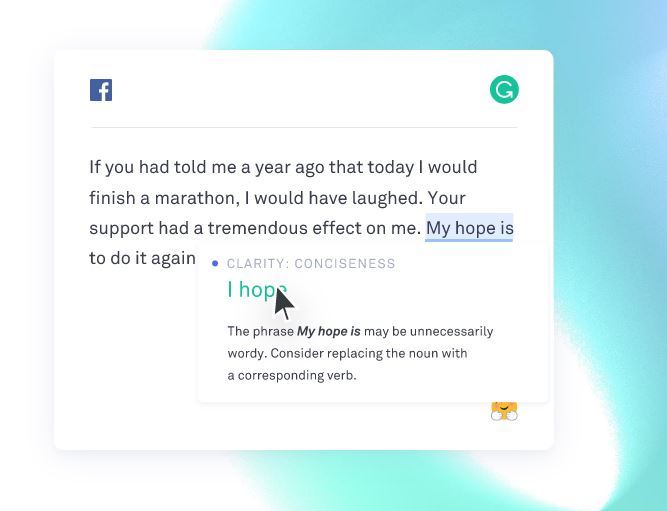
The Grammarly checker tool is committed to providing its users with clear, mistake-free writing that makes the right impression. It goes beyond your basic spell checker tool to help you create clear and concise messages across all applications.
We’re talking emails, blogs, text messages, social media posts, word or google documents, powerpoint presentations.
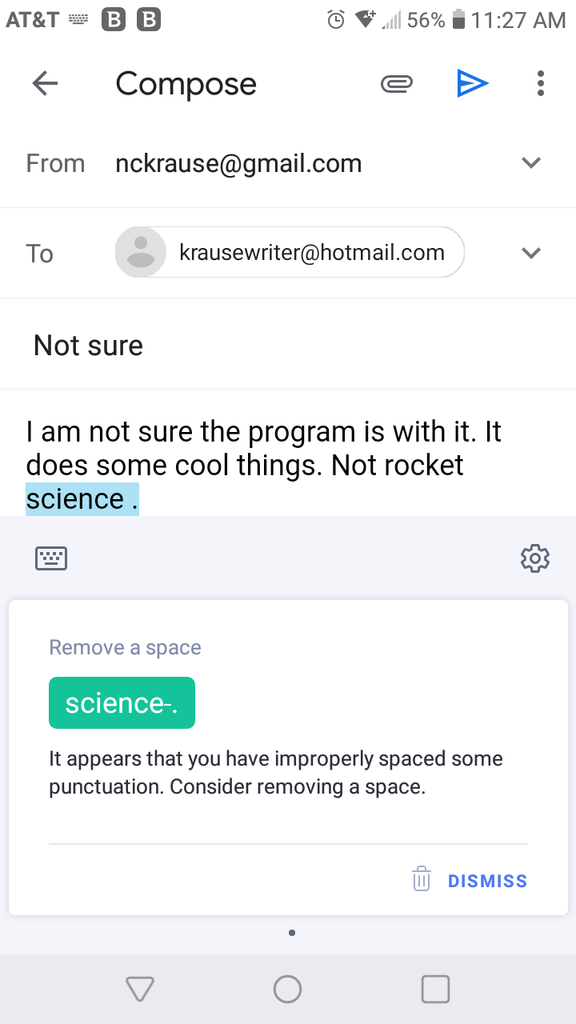
Grammarly touts itself as being perfect for aspiring writers, bloggers, marketers, copywriters, students, proposal and report writers, journalists… but it’s also just dandy for social media addicts who want to pack a punch with their posts.
Grammarly will underline the alleged misspelled word, giving you the option of adding it to a customizable dictionary or accepting their change.
Same goes for tone, clarity, inconsistencies… Grammarly will provide a score for your original document before providing their suggestions, at which point you simply need to click in order to execute.
Your score and overall strength of writing is guaranteed to increase.
Grammarly offers a desktop browser extension, compatible with multiple browsers, to help you use the tool seamlessly across all websites… without having to open the tool every time.
The app offers a downloadable Grammarly keyboard for your smartphone or tablet, which is especially nifty for text messaging, email, meeting chats and social media purposes. The only hitch is it will replace your existing keyboard… but it’s a small price to pay for the service.
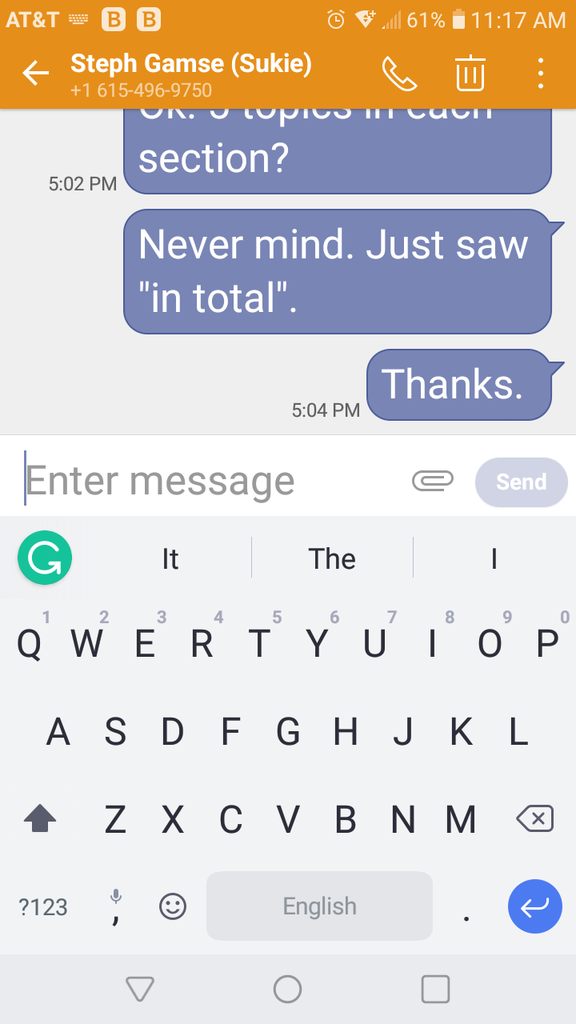
There are two versions of Grammarly, basic and premium.
Basic is FREE and offers:
Premium starts at $11.66 per month, billed annually, and offers:
Both plans allow for use on up to 5 devices per user.
Currently, there is no free trial of Grammarly; but, the cancellation policy is a cinch.
2. Pro Writing Aid
Pro Writing Aid says it’s the only platform that offers world-class grammar and style checking combined with more in-depth reports to help you strengthen your writing. Unlike grammarly, ProWritingAid offers more than pop-up suggestions… it mixes in articles, videos, and quizzes to make writing feel more fun and interactive.
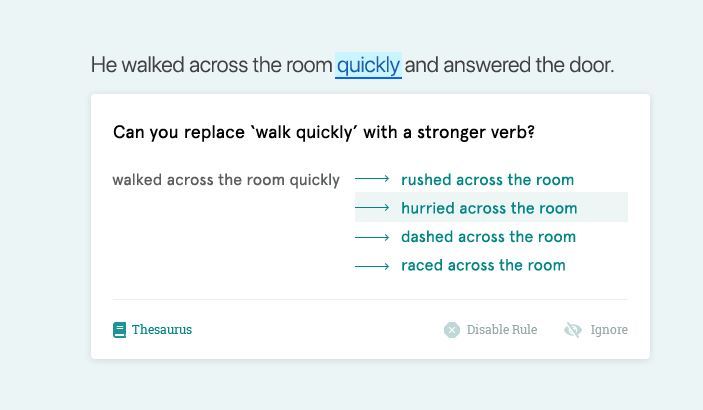
The Writing Style Report is a tool based on the same ideas you would learn in a university writing course, highlighting several areas of writing that should be revised to improve readability, including: passive and hidden verbs, over-reliance on adverbs, repeated sentence starts, emotional tells and much more. This feature isn’t all that different from Grammarly’s “document goals” and “suggestion” tools, although it does appear to utilize a more academic-style delivery method.
In fact, Pro Writing Aid claims that many professional copy editors use their site. So if you are a professional writer, fixing your mistakes upfront will allow your editor to focus on the more important aspects of your work… like its tone.
For sake of time, I copy and pasted the introduction to this article into the Web Editor. The Web Editor is free and only requires an email address to sign-up.
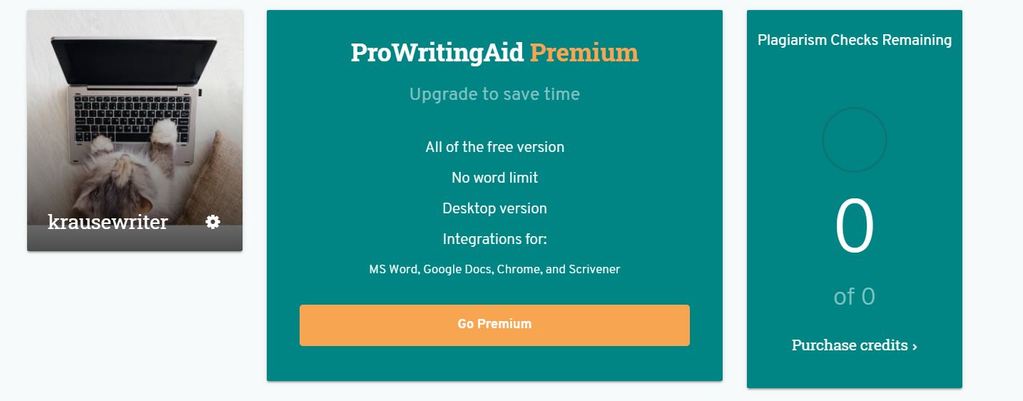
I clicked on “report summary” and was given a breakdown regarding the strength of my article. This was similar to Grammarly’s document review.
I was given a score for grammar and spelling, as well as style. Additionally, the dashboard provided measurements on the following:
I incurred a rather low score on “style” at first, so I was able to easily click on their suggestions and choose weather or not to accept them. I was urged to achieve a score of 80% or higher.
Now, my feelings on a personalized blog are that my style is my voice… so I took these suggestions with a grain of salt; however, did elect to insert a few. All it took was simply left-clicking on the underlined item and choosing whether or not to accept the change, based on their explanation.
The premium version of Pro Writing Aid features:
I liked being able to adjust the settings to better suit my writing style, which allows for less “red flags” popping up on the summary report.
There is also a nifty feature, Word Explorer, that gives you a wealth of information about a highlighted word. It offers a thesaurus, alliterations, cli·chés, common phrases, collocations, anagrams and examples from books and quotes. This was a pretty cool feature and very user friendly.
Pro Writing Aid does offer a free trial of the premium version, unlike Grammarly.
They also keep costs down because user referrals limit the application’s need to heavily advertise. Therefore, they are able to offer three premium pricing plans:
If you write for a living, or aspire to, this is the tool for you.
3. Hemingway
Being the well-known author that he is, it is no wonder someone decided to create editing software named after Ernest Hemingway.
The Hemingway Editor wants to cut the dead weight from your writing. It highlights words by category color to point out a variety of issues with the text. It’s that simple.
Hemingway also promises to help you write with power and clarity by highlighting adverbs, passive voice and dull, complicated words.
The desktop only program is available for MAC or PC, and is not meant to compete with the in-depth writing “mentorship” that Grammarly and Pro Writing Aid offer.
It's barebones, one price fits all, editor. Minimalist if you will.
That being said, it’s useful.
In addition to document edit and readability suggestions, what helps Hemingway stand out are its:
There is a free online version of Hemingway, which is just the editor. The APP costs just $19.99 for lifetime access to the software.
The Hemingway Editor offers two modes: Write and Edit. Write mode is basic suggestions, using italics and bold. The Edit mode delves into the color coded suggestions.
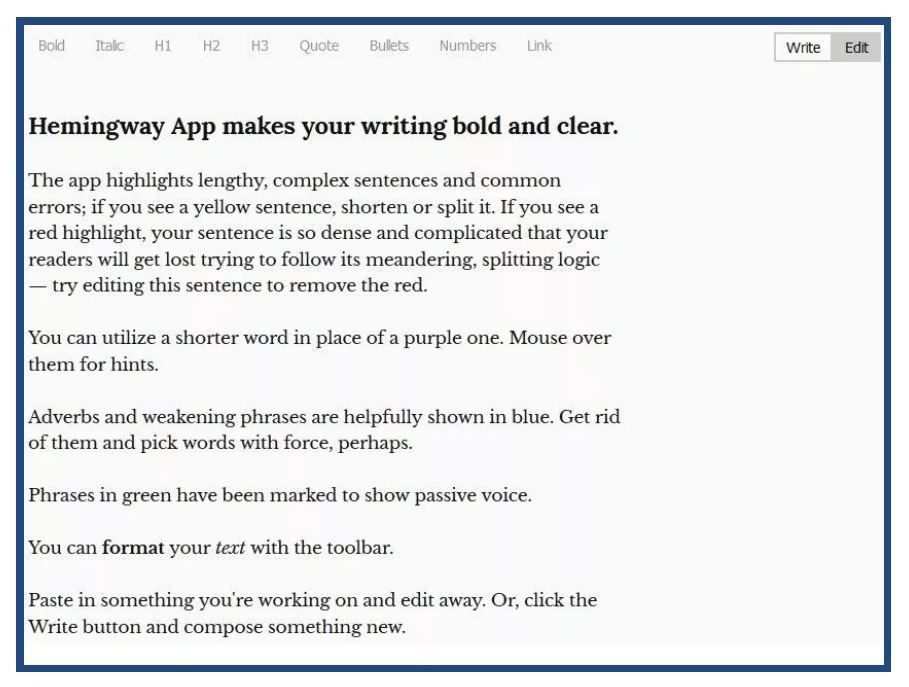
Hemingway also analyzes your text to assess the grade level it is written at.
According to the creators of the Editor, the average American reads at a tenth-grade level. So, ensuring your writing is at or below this grade level will make it accessible to the average American.
Sidebar: Ernest Hemingway’s words are assessed as being at the fifth-grade level.
There is also a word count and read time feature, which bloggers may find especially useful.
The big difference between the free Hemingway Editor and the paid App is salvageability. If you’re working online in the editor and your cpu crashes… all work will be lost. There is no ability to save and no cloud.
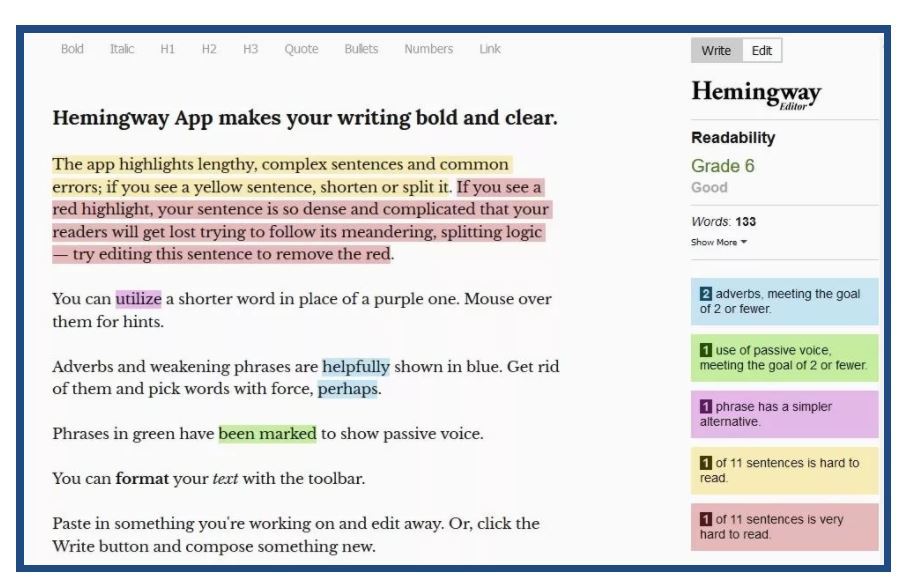
The APP allows you to save changes on your desktop. For me, this was a must have and worth the twenty bucks.
4. Scrivener
Unlike the other programs we’ve covered, Scrivener is geared towards authors.
It is about creating a manuscript or other long piece of writing… in whichever way works best for you to get it done. There is no correct order or outline feature with Scrivener.
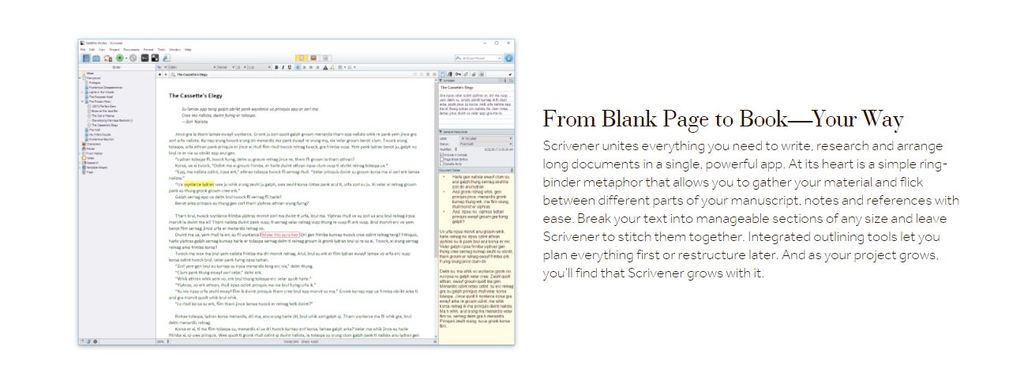
The editor is designed to cultivate lengthy writing projects by banishing “page fright”.
But how?
First off, Scrivener encourages you to compose your text in random order, in sections large or small. Got a great idea but don't know where it fits? Write when inspiration strikes and find its place later. Grow your manuscript organically, idea by idea.
Simply gather your material and toggle between different parts of your manuscript, notes and references with ease.
You are also able to break your text into manageable sections of any size and leave Scrivener to stitch them together. And the integrated outlining tools let you plan everything first, or restructure later. It’s up to you.
Separating your manuscript into parts can make for easier editing down the line.
Scrivener’s text editing is akin to that of Microsoft Word or Wordpad… utilizing bold, italics, underline, highlights, comments and annotations. You can also make lists, tables and insert graphics from the toolbar, which is both familiar for Word users – as well as customizable to fit your needs.
There is also a formatting preset function, allowing you to do multiple things with your text in one click… such as making something large and bold at the same time.
And then there’s the import feature, which I especially liked. It allows you to take projects you started in other formats and seamlessly move them into Scrivener.
Other cool features include:
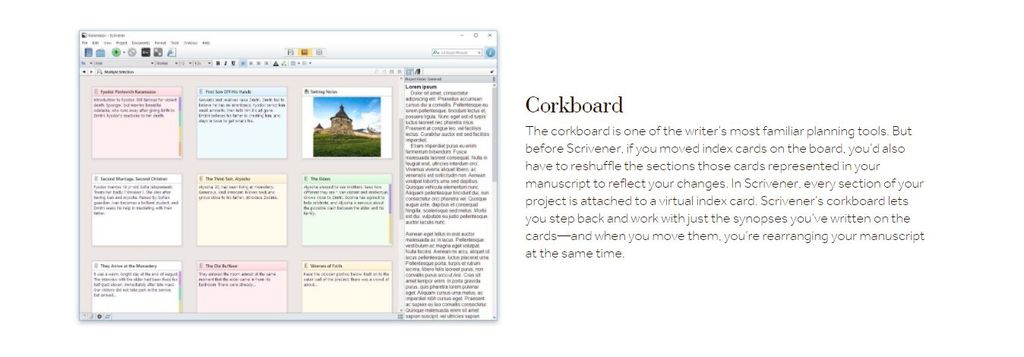
Scrivener costs $49 to download to your desktop, but students and teachers can get an academic license for $41.65. The cost for the iOS app is $19.99, for use on Apple’s mobile/portable devices. You can also do a bundle that includes a license for both windows and macOS for $80.00.
There is a trial version of the macOS and Windows versions, which runs exactly the same as the full version, except that it will only last for 30 days. You can use it for 30 days straight and be done… or every other day for 60 days total. It’s basically 30 single uses spread out however you see fit.
Unfortunately, Scrivener is unable to offer this for the iOS app due to licensing conflicts.
5. Readable
The experts at Readable attest that you have just seven seconds to grab a reader's attention, especially on a website.
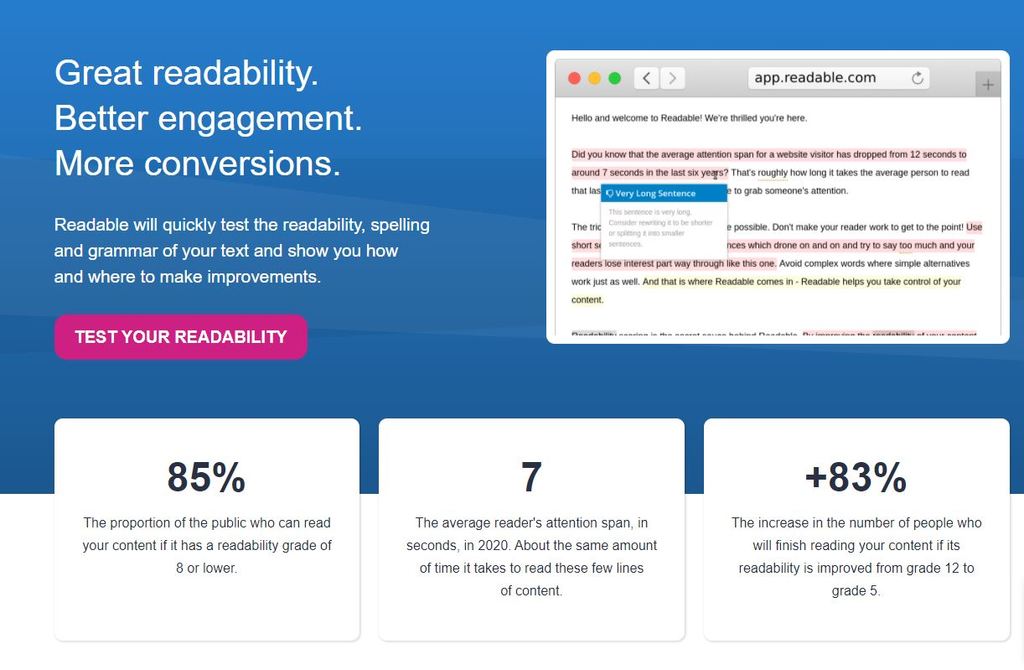
That’s because attention spans are shrinking… yet the amount of information being thrown at people is rising. We live in a society where information can be available at our fingertips within seconds, all while responding to texts and emails.
Readable is designed to make sure your content doesn’t get lost in all the noise.
Its website readability tools enable you to find the pages on your site that need a little TLC… scanning for the pages with the worst readability, spelling and grammar for you to update.
Once the initial scan is concluded, Readable will monitor your site for new pages and score those automatically as well.
By adding your domain name to their system, Readable’s indexing tools will scan your website, finding your content pages and scoring them for readability. They will assign a rating for every text page on your site and give you an overall readability rating for the whole site.
Similar to Grammarly and Pro Writing Aid, Readable looks at spelling and grammar… as well as cliche usage and writing style.
The biggest difference is their score for keyword density, which is huge if you are a site developer… and that seems to be Readable’s target audience.
Readable also works with Skype and Dropbox, without having to exit the applications via their ReadablePro API technology. This is another standout feature to its competitors.
There is no free version of Readable, but it is a pay-as-you-go service, with no minimum term and no cancellation fees. If you cancel, your subscription will run until the end of the period you have already paid for, and you won't be billed again.
There is also a 7-day free trial with the base plan.
There are three price points for purchasing Readable:
Additional users may be added for $4 per month on all plans.
Whether you are 1 person or a small team, CommercePro is the most recommended plan, as it allows access to more features, including:
6. Draft
Draft is different. For starters, the creator is blunt.
The website is drab.
Nevertheless, it gets the job done.
Draft’s creator, Nate, believes you don't need writing software… or version control… or distraction free text editors and real time collaboration software.
What you do need is feedback on your writing, to find ways to write more concisely and clearly.
You need a bigger audience.
Draft can help… without the fluff.
Here’s some of what Nate offers:
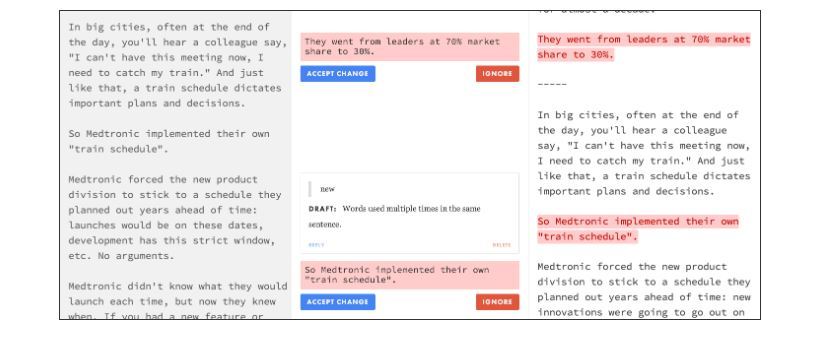
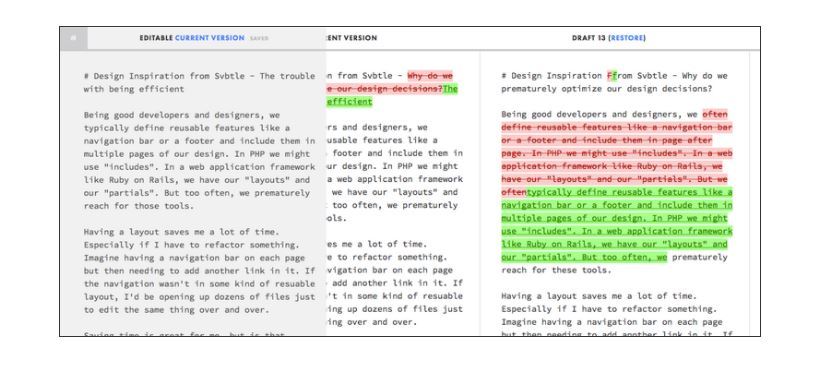
And these are just the key features.
In all honesty, Draft functions a lot like Google Docs… allowing you to track changes, collaborate via suggested edits and make comments on the doc.
But it does it better by adding new features, without getting too fancy.
The best part about Draft? It’s 100% free (at least for now). Just enter and email address and get started.
7. Writing Challenge
The Writing Challenge is a fun little app.
It is also one that many of us will find useful because it deals with something most writers have encountered at one time or another… the dreaded writer's block!
The app almost plays like a party game.
The Writing Challenge generator will provide thousands of writing prompts to get your creative juices flowing. Just have a notebook or laptop handy, press the ‘Start’ button, and let Writing Challenge inspire you.
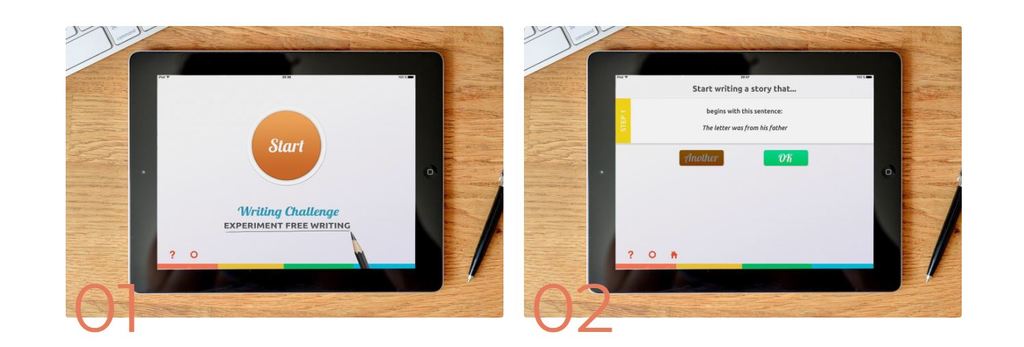
The app will give you a choice to accept or pass on the challenge. If you hit the “another” button, you’ll be given another challenge immediately.
There is a timer, if you want to make things interesting and force yourself to write against the clock.
This is also a great option for groups wanting to play the “game” together. Each person will start writing until time is up… then rest down the pencils and compare stories.
In the app’s settings, you are also able to configure the number of steps you want in order to tell your story. You can use these steps as turning points or as simple triggers to move the story along. Once you’ve completed all the steps, the app will suggest an ending for your story.
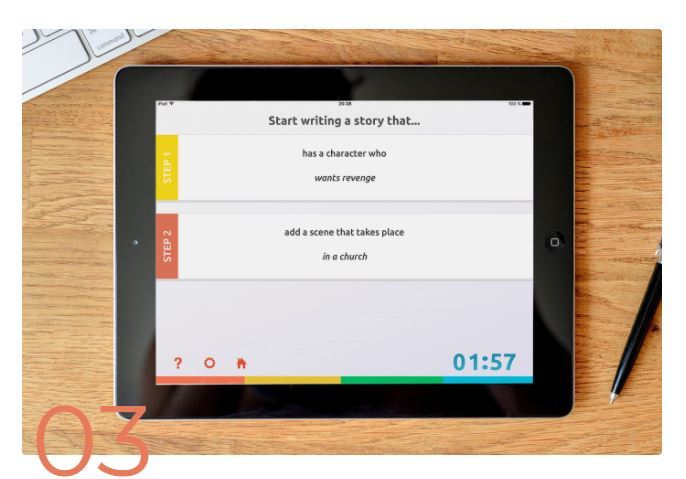
The Writing Challenge app is available on iOS, Android and Kindle devices. A download is also available for MAC. The app is great for inspiration on the go with your portable devices.
The cost is just $1.49 USD via Google Play, $1.99 on Kindle and via the App Store.
The desktop version costs $3.99.
While this really is a cool app, it made my list primarily for its Kids version. Writing Challenge for Kids is an awesome app that my kids can use on their Kindles… which means less time playing Roblox and more time doing something that can actually impact their education, without being obvious about it.
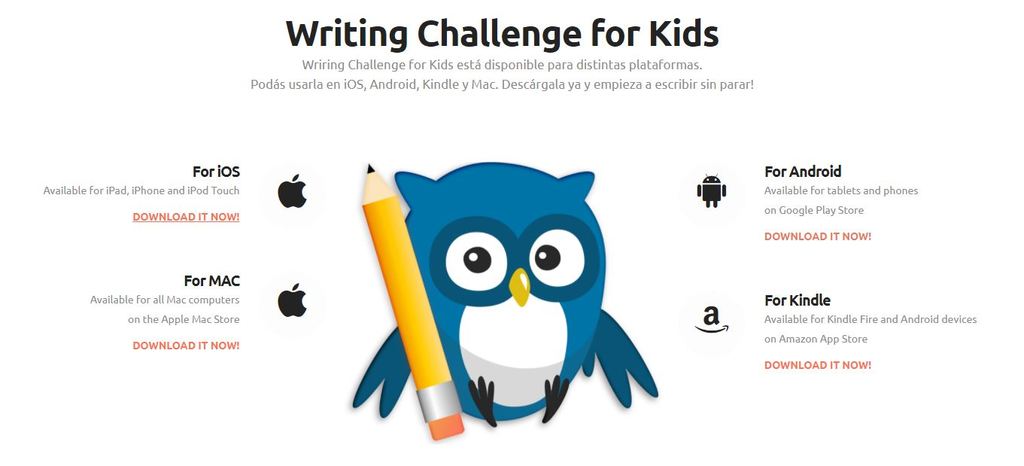
My kids love making up stories and drawing, so it’s a win/win that Writing Challenge plays like a tablet game… but is actually an effective writing tool.
The cost for the kids version is the same as above for Android and Kindle users; however, the cost is $3.99 for both the App Store and Mac versions. Still a good deal, in my opinion.
Final Thoughts on Writing Apps and Software
Depending on the type of writer you are, or aspire to be, there are tools out there that can help you step up your game and increase productivity.
I tried to include a selection for everyone… the bloggers, social media junkies, students, business professionals, aspiring authors. Even kids.
They all have their own perks and there is no one app that will satisfy all audiences. My advice is to begin by determining the type of writer you are, what you’re looking to accomplish with a writing app, and how much you’re willing to spend to reach your goals.
Once you’ve done that, narrow down the list and test as many out as possible for at least a week or more.
I can tell you that none of these apps will disappoint… it’s really all about finding the one that is the right fit for you.


